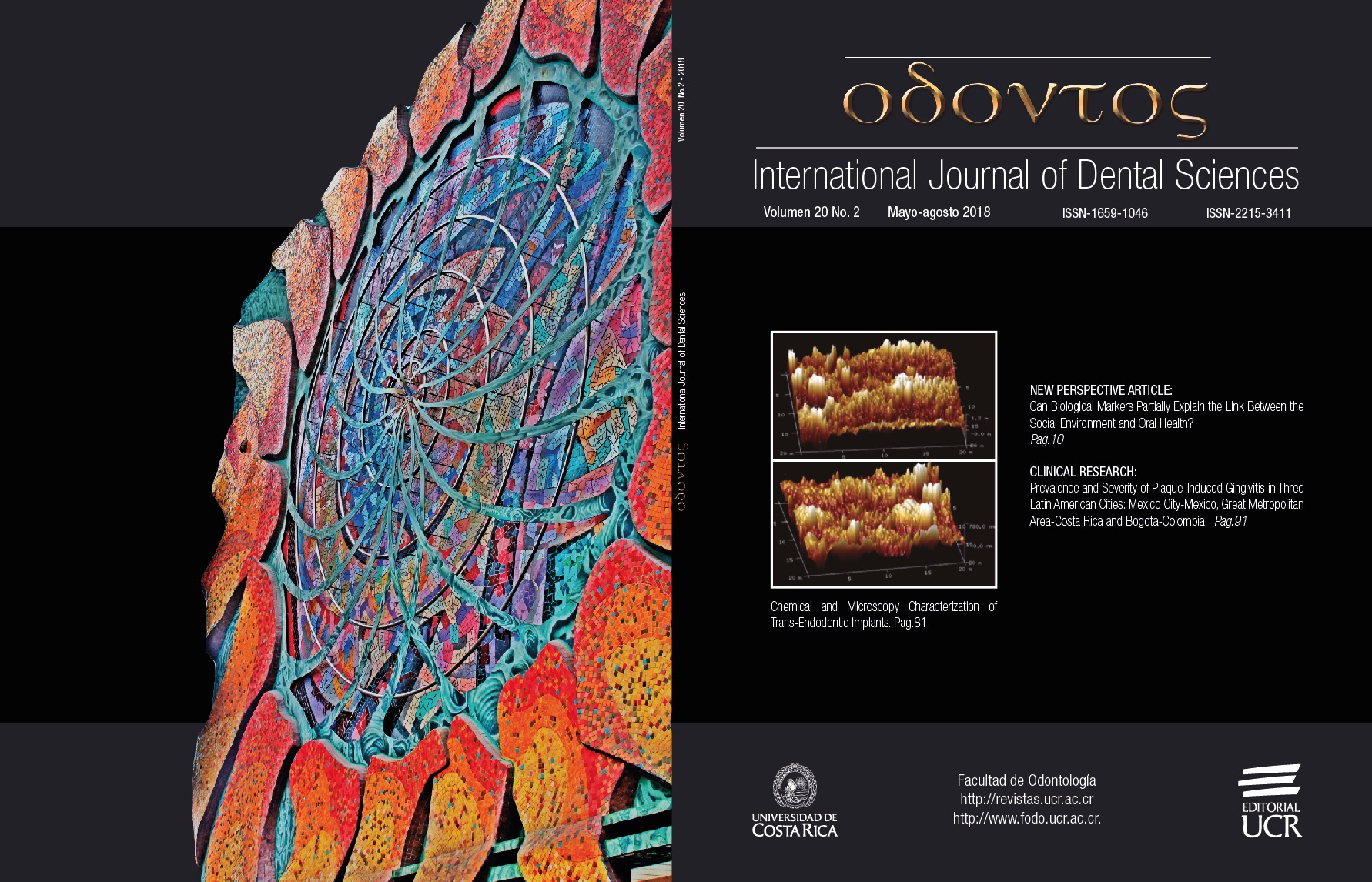Abstract
Skeletal Class III is a malocclusion characterized by anterior crossbite as a result of an abnormal skeletal maxillary and mandibular base discrepancy, which involves disharmony of craneofacial skeleton and profile. The preferred management for children having skeletal Class III malocclusion with retruded maxilla and/or prognathic mandible is the use of devices that encourage the growth and anterior movement of the maxilla bone and/or restrict the exessive mandible growth. The orthopedic treatment consisting of a face mask with rapid maxillary expansion (RME) produces the most dramatic results in the shortest period of time. The purpose of this article is to review a quick correction of skeletal class III maloclussion in the primary dentition through a case example with use of a face mask plus rapid maxillary expansion therapy in a 5 year-old male patient due to a combination of retruded maxilla and protruded mandible, in primary dentition, who was treated with a Petit face mask in conjunction with a bonded RME intraoral appliance added with bite blocks. The first evident occlusal outcomes were a clockwise rotation of the mandible, a positive overjet of 3 mm, a correct overbite, a canine Class I relationship, and a bilateral flush terminal plane. After discussing the present clinical case report and the related published literature, we concluded that skeletal class III malocclusions should be treated as soon as the first clinical signs of abnormal craniofacial growth are recognized, during the first years of life.
References
American Academy of Pediatric Dentistry. Guideline of management of the developing dentition and occlusion in pediatric dentistry. Pediatr Dent. 2016; 17 (6): 253-65.
Maheshwari S., Gupta N. D. Early treatment of skeletal Class III: A case report. J Indian Soc Pedod Prev Dent. 2001; 19 (4): 148-51.
Zhang W., Qu H. C., Yu M., Zhang Y. The effects of maxillary protraction with or without rapid maxillary expansion and age factors in treating Class III maloclusion: A meta-analysis. Plos One. 2015; 10 (6): e0130096.
Kapust A. J., Sinclair P. M., Turley P. K. Cephalometric effects of face mask/ expansion therapy in Class III children: A comparison of three age groups. Am J Orthod Dentofac Orthop. 1998; 113 (2): 204-12.
Ngan P., Hon-Yin S.. Early treatment of Class III patients to improve facial aesthetics and predict future growth. Honk Kong Dent J. 2004; 1: 24-30.
Solano-Mendoza B., Iglesias-Linares A., Yañez-Vico R. M., Mendoza-Mendoza A., Alió-Sanz J. J., Solano-Reina E. Maxillary protraction at early ages. The revolution of new bone anchorage appliances. J Clin Pediatr Dent. 2012; 37 (2): 219-29.
Karthi M., Gobichettipalayam J. A., Bhandari P. K.. Early correction of Class III malocclusion with rapid maxillary expansion and face mask therapy. J Pharm Bioallied Sci. 2013; 5 (Suppl 2): S169-72.
Ellis E., McNamara Jr J. A.. Components of adult Class III open-bite malocclusion. Am J Orthod. 1984; 86 (4): 277-90.
Singh K., Verma V. K., Panda S., Sachan A. Management of skeletal Class III malocclusion in an early mixed dentition with face mask therapy: A case report. J Dent Res Updates. 2014; 1 (1): 55-60.
Rodrigues de Almeida M., Rodrigues de Almeida R., Oltramari-Navarro P. V., Ferreira-Conti A. C., de Lima-Navarro R., Camacho J. G. Early treatment of Class III maloclussion: 10-year clinical follow-up. J Appl Oral Sci. 2011; 19 (4): 431-9.
Al-Khalifa H. N. Orthopedic correction of Class III malocclusion during mixed dentition. Open J Stomatol. 2014; 4: 372-80.
Abraham A., Peter E., Philip K., Mukundan V., Geoge J., Sreevatsan R. Early management of Class III malocclusion with bonded maxillary expansion and facemask therapy. A case report. Int Den J Stud Res. 2016; 4 (4): 202-6.
Sarver D. M. The face as the determinant of treatment choice. From Frontiers of dental and facial esthetics. Craniofacial Growth Series, 38. McNamara & Kelly Eds. 2001.
Kanno Z., Kim Y., Soma K. Early correction of a developing skeletal Class III malocclusion. Angle Orthod. 2007; 77 (3): 549-56.
Major P. W., El-Badrawy H. E. Maxillary protraction for early orthopedic correction of skeletal Class III malocclusion. Pediatr Dent. 1993; 15 (3): 203-7.
Ngan P. Treatment of Class III malocclusion in the primary and mixed dentition. In: Bishara S. Textbook of Orthodontics. Saunders, 375-414, 2003.
Baccetti T., McGill J. S., Franchi L., McNamara Jr J. A., Tollaro I. Skeletal effects of early tratment of Class III malocclusion with maxillary expansion and face-mask therapy. Am J Orthod Dentofac Orthop. 1998; 113 (3): 333-43.
Kim J. H., Viana M. A., Graber T. M., Omerza F. F., BeGole E. A. The effectiveness of protraction face mask therapy: A meta-analysis. Am J Orthod Dentofac Orthop. 1999; 115 (6): 675-85.

